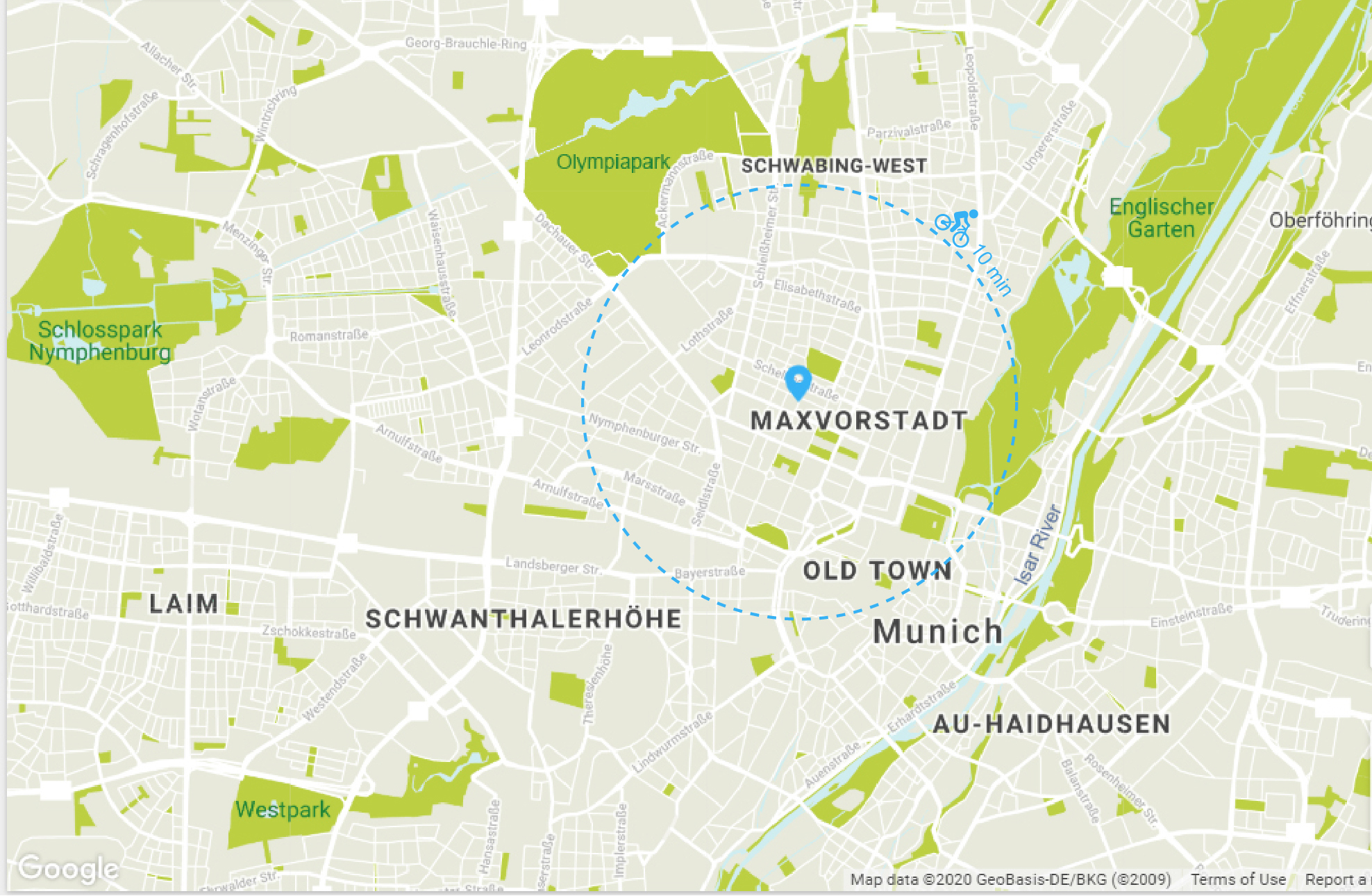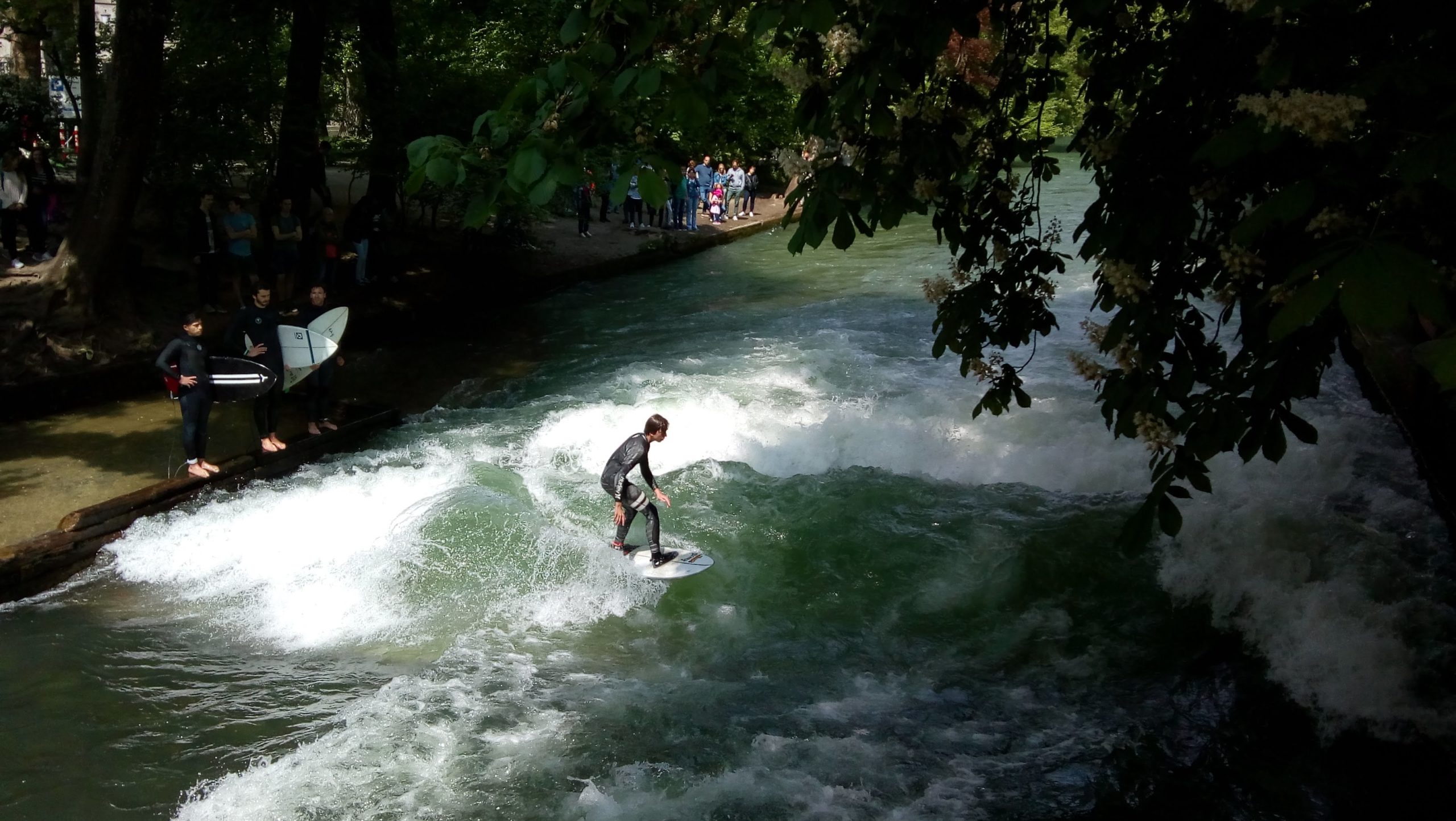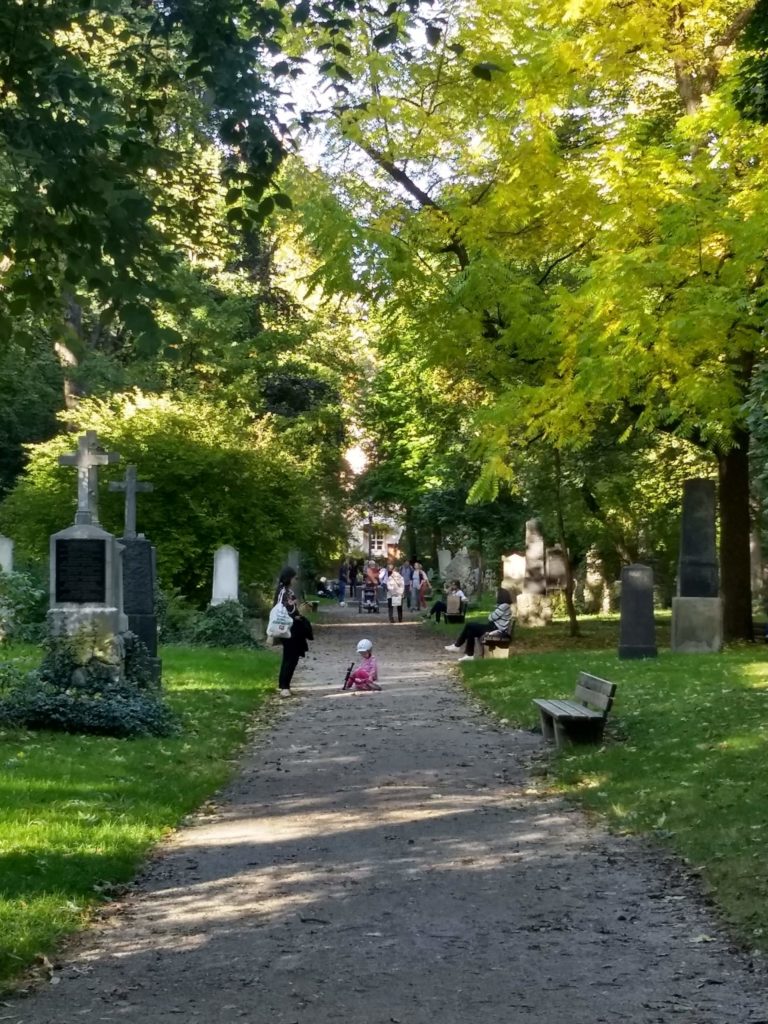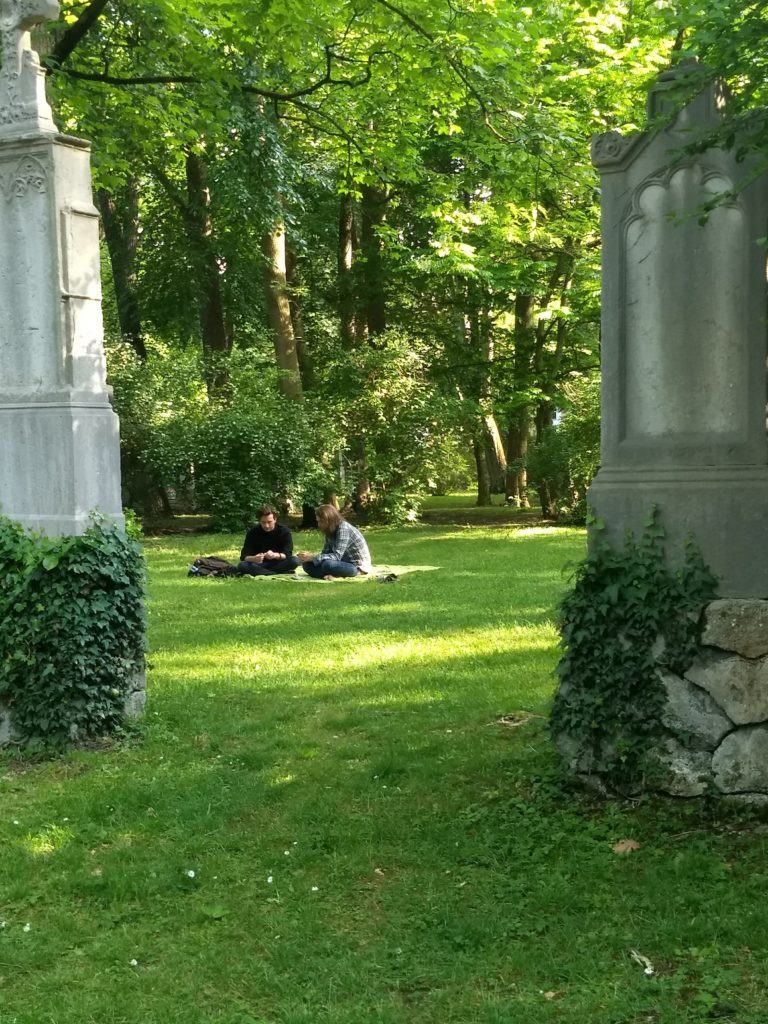I had never lived in a city where parks were as much at the center of everyday life. Parks can tend to be creepy and empty, but today more than ever cities need to promote these refreshing spaces. What can we learn from the success of the parks in Munich?
A green space is not enough

Enormous parks are the first thing I think of when someone asks me about Munich. They are so fundamental in the life here that I don’t think I’ve spent a week without going to a park, even in winter. Everyone here has memories associated to parks because they are spaces where we gather with friends, spend hot days, do sports etc. These green spaces are actually one of the most public space when you think about it, because you can stay there all day long enjoying yourself without having to pay for anything. At a time where often the only places to sit on squares are the coffee shop tables or that the only thing to look at in streets are shop windows, it is hard to spend time in qualitative public space which has nothing to do with consuming. Parks give the possibility to everyone to meet in any number and stay as long as they want. This characteristic is actually what can explain the failure of most of the parks I had experienced before: the green spaces opened to all ended up being occupied by troubling teens or homeless people having nowhere else to gather. These parks were of course deserted by everyone else so when I arrived in Munich and saw that actually half the city seemed to be in the parks as soon as it was sunny, I was quite astonished! What is it then that makes the parks of Munich so much buzzing with activity?
Parks only a bike ride away
First of all the parks’ density is a determining factor for their attractivness. There seems to be three granularities of leisure green spaces in Munich: The small playgrounds at a block level, the little parks at a neighbourhood level and the large parks at the city level. Around me I find many green spaces within a short walking distance but this is hard to precisely evaluate as actually these small green and playing spaces are extremely dense in Munich as they are part of a policy in Bavaria where every new housing building with more than three flats must offer a children playground on the plot or on a touching property (BAYBo Art.7). This rule can also be adapted if a playground is near to the plot. This measure for new buildings also translate in existing neighbourhoods with a great effort of the city to offer small playgrounds as much as possible. This means that actually even if some parts of the map seem to be lacking green, they are actually sprinkled with these green playground areas.
Secondly, I am lucky to live within about 8 walking minutes of two neighbourhood level parks. These small parks each have their own identity and are part of the inhabitants everyday life. There are the place parents take kids after school, where people have their lunch break, where casual runners go spread their legs, where groups meet in week evenings for a basketball game etc. It is mostly filled by locals staying a short time to get some fresh air. The larger parks are mostly within a short cycling distance. This greater distance is perfectly manageable as cycling networks are well organized and inhabitants visit these parks more on a weekly basis so it’s perfect to warm up for sport on a bike or just to pack the picnic in the basket and ride there for the afternoon. The most impressive park is of course the Englischer Garten which is a 375 ha strip of green allowing anyone in the north of Munich to have a quick access to a green space however far from the center they are.
So there is clearly a lot of green spaces in Munich, but what makes them so successful?
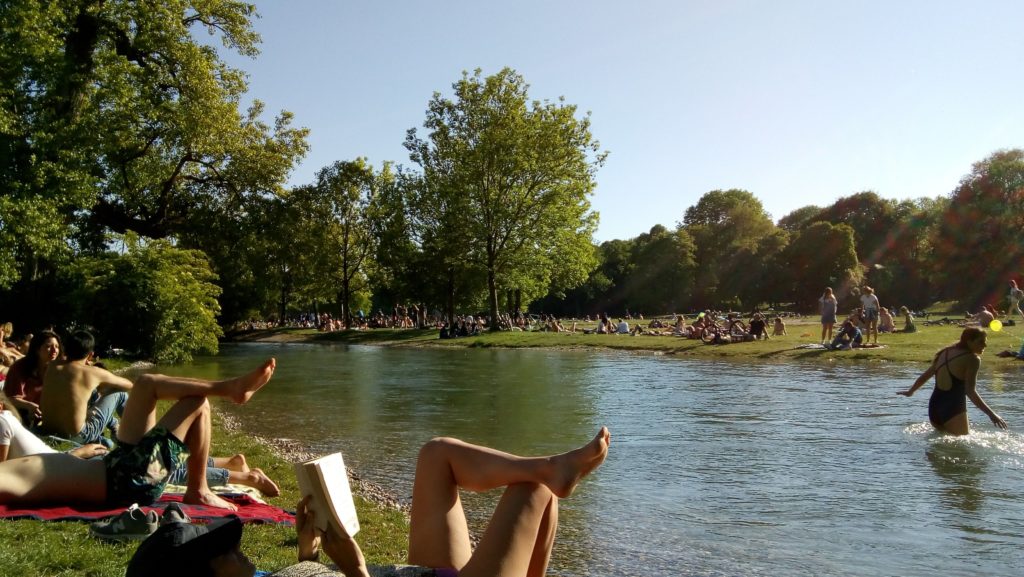
“A generalized neighbourhood park that is stuck with functional monotony of surrounding in any form is inexorably a vacuum for a significant part of the day. […] In cities, liveliness and variety attract more liveliness; deadliness and monotony repel life.”
Jane Jacobs, The death and life of great American cities, 1969
Diversity of function
For Jane Jacobs (1916-2006), an American-Canadian journalist, author, and activist who greatly influenced urban studies, the success of parks relies on diversity of function surrounding the parks but also within the parks. This is exactly the strength of the parks of Munich. First of all the small neighbourhood parks offer a diversity of basic infrastructure attr acting many age groups. For example, a children’s playground, a basketball tarmac field, a few table-tennis tables, benches and simply grass to sun bathe offer a perfect mix of activities for all generations which means they can be used by different age groups during the day. With their simple design they allow space for appropriation of the users and makes them feel welcome to use the space, unlike a sign “don’t walk on the grass” often found in parks suggests.
Then, the great parks on a city level have an outstanding amount of different function within them. In the Olympiapark is to be found the olympic stadiums which now host events, a swimming pool, the sport facilities of a University, a observation tower with a restaurant, an aquarium and on top of than many outdoor sportive events of markets. There is always a reason to go there. The identity and diversity of the park is reinforced by a strong landscape design directed by Günter Behnisch, Fritz Auer, Carlo Weber, Eberhard Tränkner and Winfried Büxel. The lake and hills create a variety of depths of field, points of view, reflexions and shades which attracts the visitors eye and drives him to discover the different places. Moreover the beautiful stadiums designed by Frei Otto are a sufficient reason to visit the park.
The Englischer Garten is just as remarkable in its diversity as it features lawns to sunbathe and freely set up volleyball nets, surfers on an artificial wave of the river, two Biergartens, a lake with rowing boats and it is even tolerated to swim in the main river and let yourself drift with current. A very fun activity I must admit! Everyone here is free to do many activities and this is what attract even more crowds as for example the surfers are usually subject to a massive crowed of curious observers!
“Please do what ever you want on the grass”
This freedom of activity brings me to the last point I believe make the success of these parks: Tolerance.
This is a tacit equilibrium which of course implies respect of the users but it seems to work particularly well here for reasons I can’t really explain. Many activities are tolerated in the parcs such as installing volleyball nets, swimming in the rivers, grilling in some defined zones next to the Isar river and even nudist zones right in the middle of the park! These elements cohabit and remain under control because people know the limits and respect them. This is actually particularly noticeable right now during the Corona-virus lockdown where walks to the park are allowed without forming groups and this seems to be generally well respected by everyone ( In fact, Germany is containing the outbreak eventhough the visitors rate of parks actually increased by 30% during the lockdown of the country according to the Google mobitily report: https://www.google.com/covid19/mobility/ ). The key of this respect is of course, as Jane Jacobs underlines, observing eyes. As the green spaces are full of observers everyone feels some sort of surveillance and sticks to the rules as there would be witnesses if this was not the case. This brings also security and therefore allows everyone to enjoy the park in a serene atmosphere. Hereby the best illustration of this tolerance right next to my home: an old cemetery now used as a park where everyday life enjoys this natural realm between the silent stones.
Further Note:
Parks come along with Beer
It seems actually that the culture of enjoying green spaces is embedded in the Bavarian culture. Indeed, the Biergartens, which are outdoor restaurants where masses come to appreciate a cool beer on a summer days, are fully integrated in parks. Two fun facts about those (from what locals told me): 1. The beer glasses traditionally are built with a lid so that the leaves would not fall in the beer as the tables are always installed under the trees. In fact, these trees are deliberately placed here in order to keep cool the beer situated in the caves under the Biergarten! They thought of everything! 2. The Radler, a lighter beer which is mixed in lemonade, takes its name from the cyclists, “die Radler”, as many people came by bike to the Biergarten which were situated in the middle of parks and could not drink strong beer if they wanted to be able to cycle home! Maybe this is the secret to great parks…
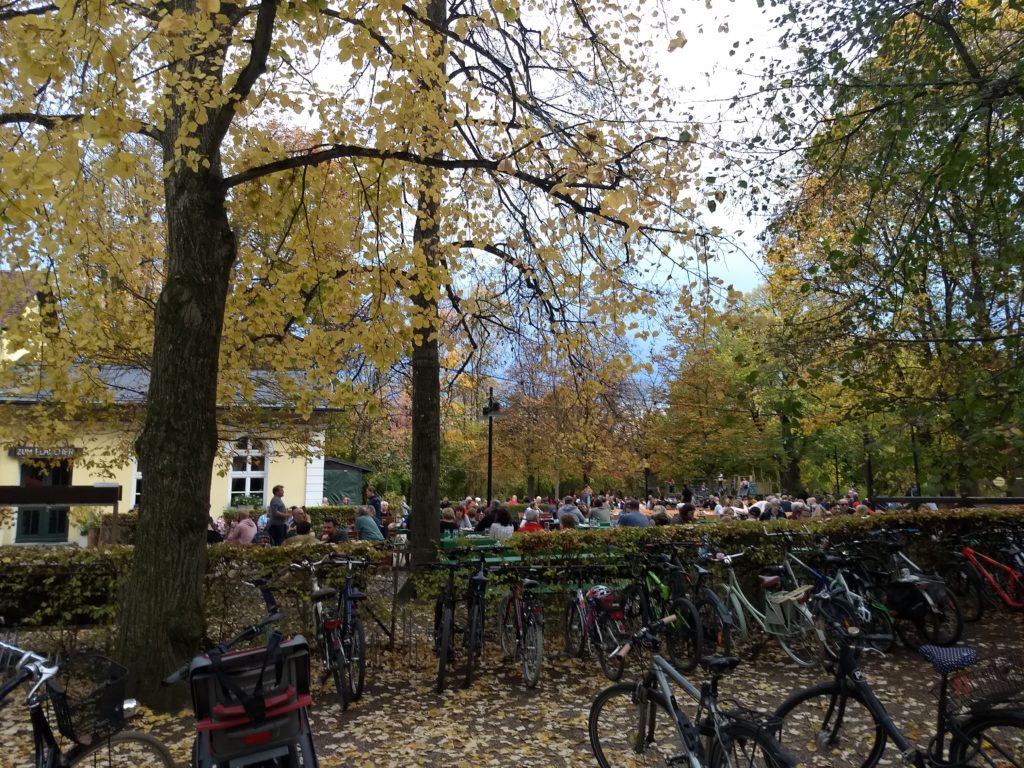
Sources:
Books:
- J. Jacobs, The death and life of great American cities, 1969
Websites:
